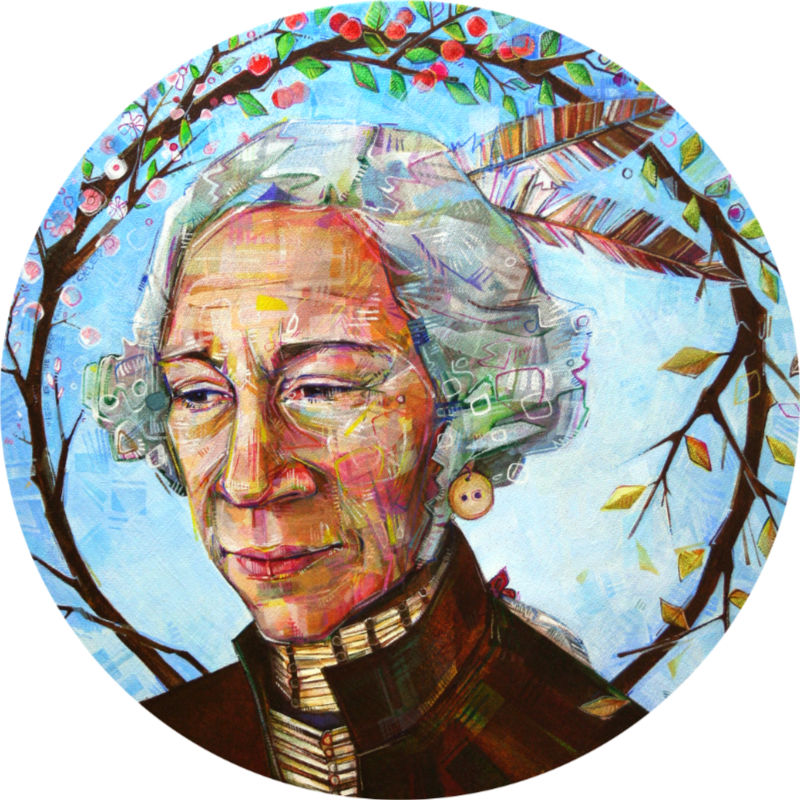Artwork / Archives / Apple Pie / First American (Native American, Christine)

First American (Native American, Christine)
2008
acrylic on burlap
35 inches in diameter
I asked each of the participants in Apple Pie to write something about what it means to be an American. This is Christine’s response.
Being (Native) American
America is a State, but I am a state of being. I am born here and I grow here. I find that “being” American means occupying both Native American and European identities and spaces. Being, for many Native Americans, is being upon the land. For the Cowlitz people of whom I am part, this feeling of landedness is very vulnerable. Critic Arjun Appadurai contends that locality or landedness is always vulnerable, not merely because it “comes under siege in modern societies” but because it is inherently fragile; even in the “most intimate, spatially confined, geographically isolated situations, locality must be maintained carefully against various kinds of odds.” In America, the land is regulated. For the common person, and certainly for my Native ancestors, the categories of regulation imposed by land claims were a violence to be negotiated but not avoided. It is only by force that lines are drawn upon lives.
Rose, my Cowlitz great grandmother, was raised in southwestern Washington during the time of the great European settler influx. She both welcomed strangers who newly dwelled on land beside her and she also did not accept the artificial categories of land ownership imposed upon her. She chose instead to assert her own sets of rules and “traveling stories” across the lines of maps. She strode rivers, swam paths and picked the forest fern for a livelihood. She spoke languages. These, too, traveled across the lines of maps.
Like my great grandmother Rose, I find the rules of State (and thus of America) often do not map to my personal understanding of rightful inhabitance upon the land. I refuse conceptual categories that confound or discount my lived experience on the land and so I continue as my great grandmother did to thrive on the land which I gladly welcome to new strangers who would dwell here.
While I eschew a romantic spiritual environmentalism, one so often associated with Native Americans, I do feel that one’s relationship to the land is as rightful as any law. Those of us who love this land wander deep in the woods and wade in remote ancestral rivers; when we do so we remember and imagine who we were, and act accordingly.
To me, this painting is more than a Native American woman dressed as George Washington: it’s a testament to the trust required between portraitist and subject. It’s what makes portraiture such an important genre.
For many of the Apple Pie portraits, the subjects had more of a say in what American icon they’d be melded with, but, before I even met Christine, I knew what I wanted to do with her portrait for this series. And, while I never would have painted her mashed up with someone who represents the ultimate enemy of Native America without her permission, I was glad she agreed and grateful for her trust.
